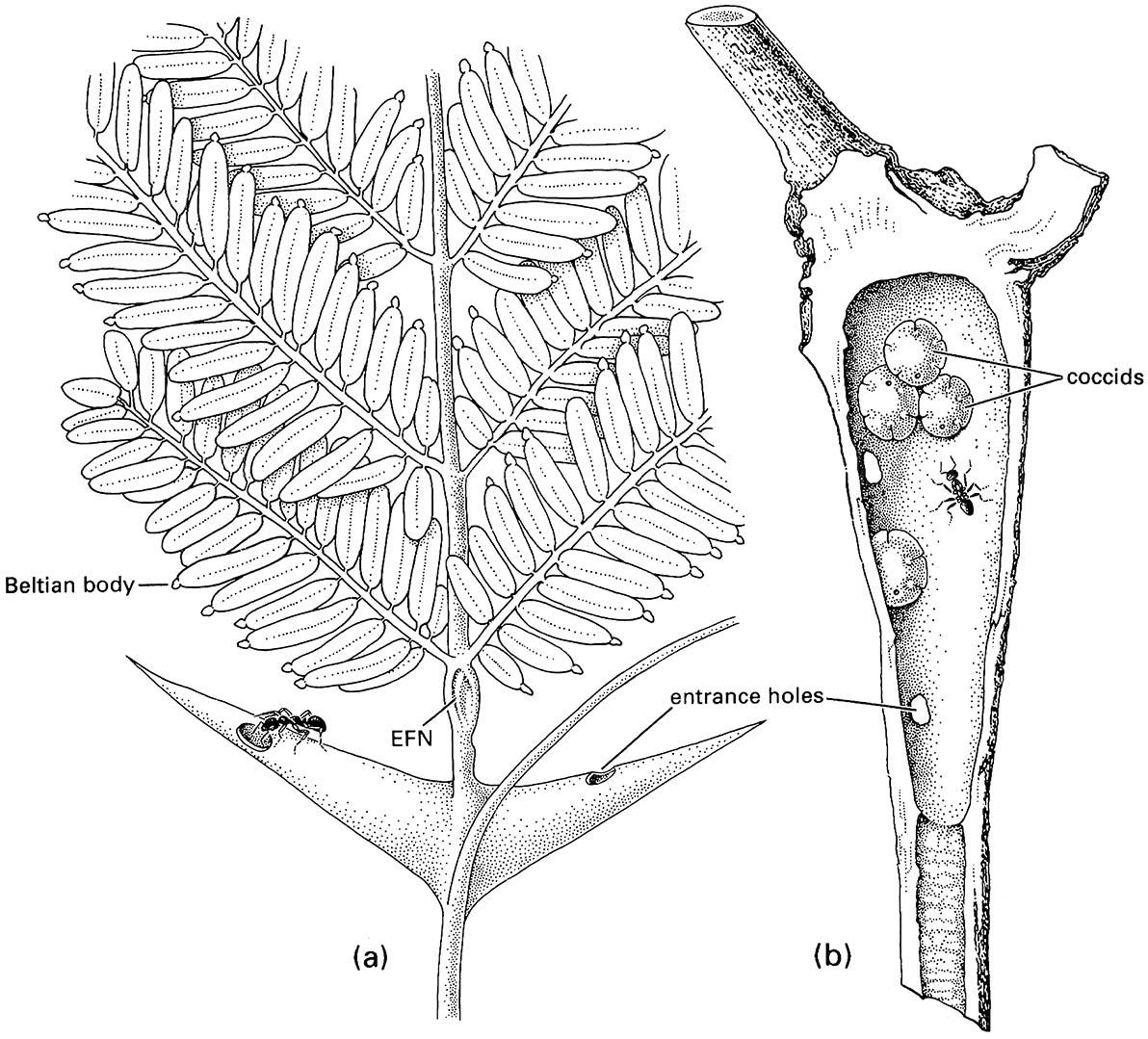Figures 11.10

Figures 11.10. Two myrmecophytes showing the domatia (hollow chambers) that house ants and the food resources available to the ants:
(a) a neotropical bull’s-horn acacia, Acacia sphaerocephala (Fabaceae), with hollow thorns, food bodies, and extrafloral nectaries (EFNs) that are used by the resident Pseudomyrmex ants; (b) a hollow swollen internode of Kibara (Monimiaceae) with scale insects of Myzolecanium kibarae (Hemiptera: Coccidae) that excrete honeydew that is eaten by the resident ants of Anonychomyrma scrutator. ((a) After Wheeler 1910; (b) after Beccari 1877)

